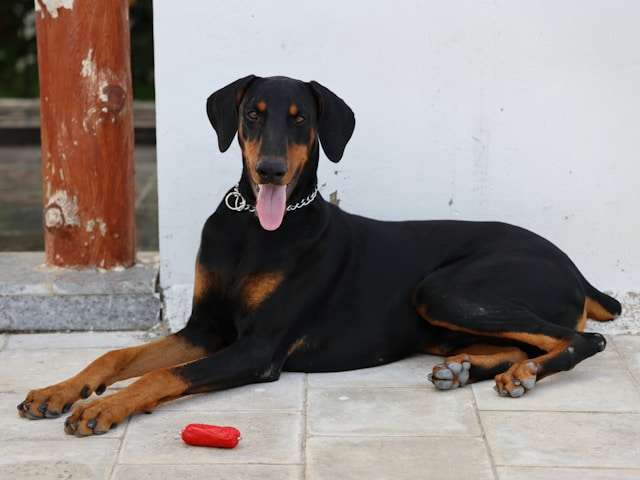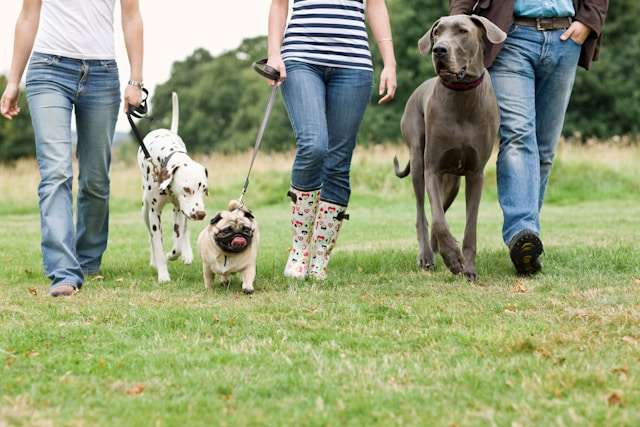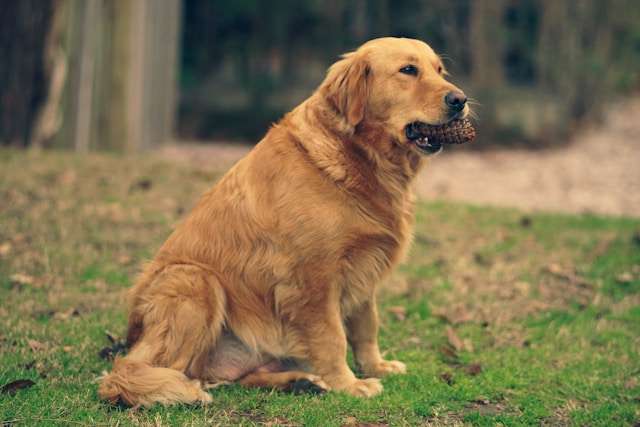Are Dachshunds Good Dogs? 10 Essential Tips
1. Introduction to Dachshunds

Are Dachshunds Good Dogs? Dachshunds, affectionately known as wiener dogs, have unique physical features and an endearing personality that make them popular among pet owners.
This article will serve as a comprehensive guide for new Dachshund owners, covering everything from the breed’s history to its specific health needs.
Whether you are considering adopting a Dachshund or already have one, understanding their unique characteristics and requirements is crucial for providing the best care possible.
This guide will explore essential tips for new Dachshund owners, including their temperament, training needs, health considerations, and more. By the end, you’ll be equipped with the knowledge to ensure your furry friend lives a happy and healthy life.
Table of Contents
2. A Look Back: The History of Dachshunds
Origins and Purpose
The Dachshund originated in Germany and was initially bred to hunt badgers and other burrowing animals. The name Dachshund derives from the German words Dachs, meaning badger, and Hund, meaning dog. Their long bodies and short legs made them exceptionally suited for digging into burrows, showcasing their tenacity and bravery. This breed was primarily used for hunting in the 18th century and quickly gained popularity for their skills.
Dachshunds were also bred in standard and miniature sizes to cater to different hunting needs as they evolved. Their unique body structure and fearless nature significantly influenced their early development. As time passed, these dogs transitioned from working animals to beloved family pets, thanks to their friendly demeanor and loyalty.
As pet ownership trends shifted towards companionship, Dachshund’s friendly personality appealed to families and individuals alike. They are now known for their loyalty, playful spirit, and distinctive looks, making them cherished members of many households.
3. Unique Traits of Dachshunds
Physical Characteristics
Dachshunds are easily recognizable due to their elongated bodies and short legs. They come in two primary sizes: standard and miniature. Standard Dachshunds typically weigh between 16 and 32 pounds, while miniature ones usually weigh under 11 pounds. Their coat can vary, with three common types: smooth, longhaired, and wirehaired. Each type has its distinct grooming needs and characteristics.
Their large, expressive eyes and long ears contribute to their charm, making them incredibly appealing to pet owners. The Dachshund’s unique physical traits, such as their keen sense of smell and agility, serve aesthetic purposes and have functional purposes tied to their history as hunting dogs.
Temperament and Personality
Are Dachshunds Good Dogs? Dachshunds are renowned for their bold and playful personalities. They are intelligent dogs, often displaying a curious nature. Their energetic disposition requires mental and physical stimulation, which can come from playtime, training, or engaging toys. Although they are often independent thinkers who tend to be stubborn, consistency in training will yield positive results.
4. Socialization: The Key to a Well-Adjusted Dachshund
Why Socialization Matters
Socialization is a crucial aspect of raising a well-rounded Dachshund. Exposure to various environments, people, and animals helps Dachshunds develop confidence and reduces the likelihood of fear-based behaviors. Dachshunds may become overly protective or anxious without proper socialization, leading to potential behavioral issues.
Tips for Effective Socialization
To effectively socialize your Dachshund, gradually expose them to new environments and experiences. Before venturing into busier places, begin with controlled settings, such as your home or backyard. Encourage positive interactions by rewarding your dog with treats and praise for calm behavior around new stimuli.
Be mindful of their body language during these experiences. If your Dachshund shows signs of fear or aggression, it’s important to back off and allow them to acclimate at their own pace. Continuous, positive social experiences will build their confidence and help them thrive in diverse situations.
5. Training Your Dachshund
Basic Obedience Training
Training is vital for any dog, but consistent and positive methods yield the best results with Dachshunds. Begin with basic commands like sit, stay, and come. Use treats and praise to motivate your dog and reinforce good behavior. Keep training sessions short and engaging, typically around 5-10 minutes, as Dachshunds can quickly lose focus.
Consider enrolling your Dachshund in a training class, which can provide professional guidance while simultaneously introducing them to other dogs for socialization. Consistency is vital; ensure all family members use the same commands and training techniques to avoid confusion for your pet.
Understanding Their Learning Style
Are Dachshunds Good Dogs? Dachshunds are intelligent but can be stubborn. They often require a more patient approach to training. Instead of harsh corrections, focus on positive reinforcement methods—rewarding good behavior rather than punishing undesirable actions. This approach encourages your Dachshund to learn and trust you, resulting in a more effective training experience.
Additionally, incorporating play into your training can make the process more enjoyable for your Dachshund. Use toys or games that stimulate their minds while reinforcing commands, ensuring that learning is a fun activity rather than a chore.
6. Health Needs of Dachshunds
Common Health Issues to Watch For
Dachshunds are generally healthy dogs, but their unique body structure makes them susceptible to specific health issues. One of the primary concerns is intervertebral disc disease (IVDD), which affects the spine and can lead to paralysis. Regular exercise and maintaining a healthy weight are crucial in minimizing the risk of IVDD.
Common health conditions include obesity, dental problems, and specific skin allergies. Regular check-ups with a veterinarian can help identify and address these issues early on, ensuring your Dachshund remains healthy and happy.
Importance of Regular Vet Check-ups
Routine veterinary visits are essential for preventing and managing health issues in Dachshunds. During these check-ups, your vet can provide vaccinations, dental care, and advice on diet and exercise tailored to your dog’s specific needs. Regular health screenings can catch potential issues early, improving your pet’s overall quality of life.
Additionally, discussing behavioral changes or concerns with your vet can provide insight into your Dachshund’s health and emotional well-being. Establishing a solid relationship with your veterinarian ensures your furry companion receives comprehensive care.
7. Nutrition for Your Dachshund
Choosing the Right Dog Food
Providing a balanced diet is vital for your Dachshund’s health. When selecting dog food, consider high-quality options containing essential nutrients specifically formulated for their size and breed. Foods rich in protein and low in fillers will provide the necessary energy while supporting their overall health.
Consulting with your veterinarian can help you choose the right food, taking into account your Dachshund’s age, weight, and activity level. Be cautious of commercial food that makes exaggerated health claims, and always check the ingredient list for quality components.
Portion Control and Feeding Schedule
Portion control is significant for Dachshunds, as they are prone to obesity. Overfeeding can lead to serious health issues, including diabetes and joint problems. Most dog food packaging provides guidelines for feeding amounts based on weight, but adjust portions according to your dog’s needs.
Establishing a regular feeding schedule can also help maintain a healthy weight. Ideally, feed your Dachshund two to three meals a day instead of free-feeding, which can promote overeating. Monitoring their weight and adjusting their diet will help them stay fit and healthy.
8. Exercise Requirements for Dachshunds
Daily Activity Needs
Dachshunds may be miniature, but they require regular exercise to maintain a healthy weight and prevent boredom-related behavioral issues. Aim for at least 30 minutes of physical activity daily, broken down into walks, playtime, or interactive games. Their hunting background makes them thrive in environments that provide exploration and stimulation.
Remember that Dachshunds are prone to back injuries, so avoid high-impact activities or excessive jumping. Short walks and gentle play are ideal to keep them active while safeguarding their health.
Fun Activities to Keep Them Engaged
Engaging your Dachshund in interactive play can keep its mind sharp and body fit. Consider activities like hide-and-seek, puzzle toys, or agility courses for small breeds. These activities stimulate their instincts and provide a fun way to bond with your pet.
Additionally, social playdates with other dogs can be beneficial. They allow dogs to interact and play in a controlled environment, promoting physical activity and reinforcing their socialization skills.
9. Grooming Your Dachshund
Coat Types and Grooming Needs
Dachshunds come in three coat types—smooth, longhaired, and wirehaired—and each has specific grooming needs. Smooth Dachshunds have short, sleek coats that require minimal grooming, usually needing only occasional brushing to remove loose hair. In contrast, longhaired Dachshunds require regular brushing to prevent matting and tangles.
Wirehaired Dachshunds have a unique grooming requirement, often needing a process known as hand-stripping to maintain the texture of their coat. Regardless of the coat type, regular grooming is essential for overall hygiene and to keep their skin healthy.
Tips for Bathing and Brushing
Bathing should be done as needed, typically every few months or when your Dachshund gets particularly dirty. Use dog-specific shampoos to avoid irritating their skin. When brushing, use the appropriate tools for their coat type to ensure a pleasant experience and minimize discomfort. Make grooming a positive experience by using treats and praise to reward your pet.
Additionally, please pay attention to their nails, as regular trimming is essential to prevent discomfort and potential injury. Establish a grooming routine early on to help your Dachshund become accustomed to the process, making it easier for both of you.
10. Creating a Safe and Happy Home for Your Dachshund
Safe Spaces and Environment
Creating a safe environment for your Dachshund is paramount. Ensure your home is free from hazardous items, such as toxic plants, chemicals, and small objects that could be swallowed. Providing a designated space to retreat when feeling stressed or overwhelmed will help them feel secure.
Consider using baby gates or playpens to create boundaries in your home. This can prevent your Dachshund from accessing stairs or hazardous areas where they might get injured. A comfortable bed and a few safe toys can make their space inviting and promote relaxation.
Toys and Enrichment Activities
Providing a variety of toys is essential for mental stimulation. Interactive toys, chew toys, and puzzle feeders can keep your Dachshund entertained and engaged. Rotate toys regularly to maintain their interest and prevent boredom. Consider incorporating training games into playtime, providing mental and physical exercise.
Additionally, engaging in nose work or hide-and-seek activities can satisfy their instincts and provide a fulfilling experience. These activities encourage them to use their senses, promoting cognitive development and enhancing their overall well-being.
Conclusion
Recap of Essential Tips
As a new Dachshund owner, understanding the breed’s history, unique traits, and specific needs is crucial for providing the best care. From proper socialization and training to maintaining their health and nutrition, each aspect is vital in ensuring your pet’s happiness and well-being. Remember to prioritize regular vet visits and consistent grooming to keep your Dachshund healthy.
Encouragement for New Dachshund Owners
Owning a Dachshund can be a rewarding experience filled with love and companionship. Embrace the challenges of their unique personality, and remember that patience and understanding will go a long way in building a strong bond with your furry friend. Enjoy the journey of pet ownership, and cherish the moments you share with your Dachshund.
FAQs
How much exercise does a Dachshund need daily?
Dachshunds typically require at least 30 minutes of exercise daily, including walks, playtime, and interactive activities.
What are the common health issues for Dachshunds?
Common health issues for Dachshunds include intervertebral disc disease (IVDD), obesity, dental problems, and certain skin allergies. Regular vet check-ups can help catch these issues early.
How often should I groom my Dachshund?
The grooming frequency depends on the coat type. Smooth Dachshunds require minimal grooming, while longhaired and wirehaired Dachshunds need regular brushing, typically a few times a week.
What is the best diet for a Dachshund?
A balanced diet rich in protein, low in fillers, and specifically formulated for their size and breed is ideal. Consult your veterinarian for personalized recommendations based on your dog’s needs.
Are dachshunds suitable for children and other pets?
Proper socialization allows Dachshunds to be good with children and other pets. Early exposure to diverse environments and positive interactions will help them develop good social skills.







12 Comments